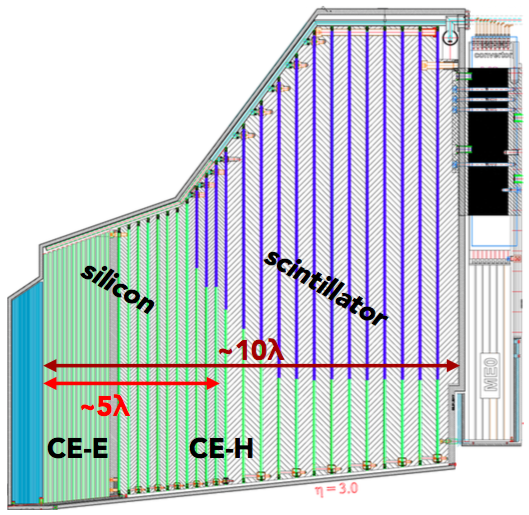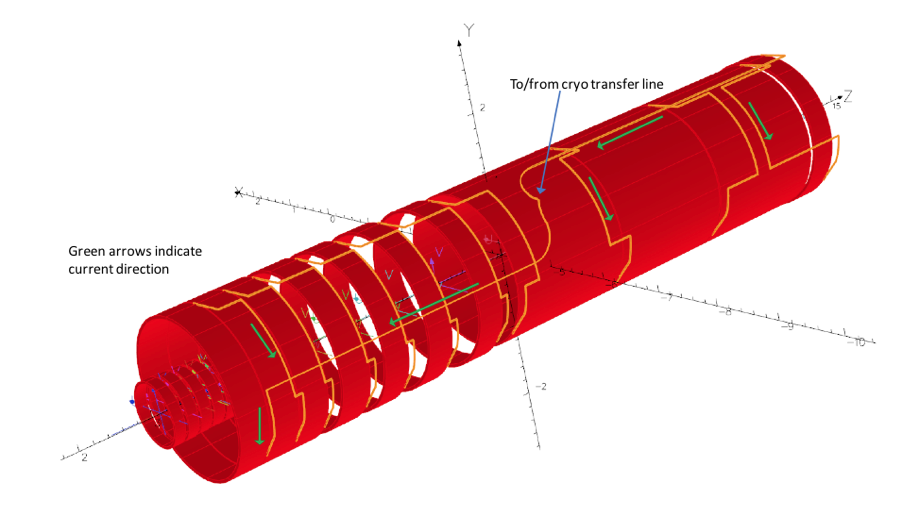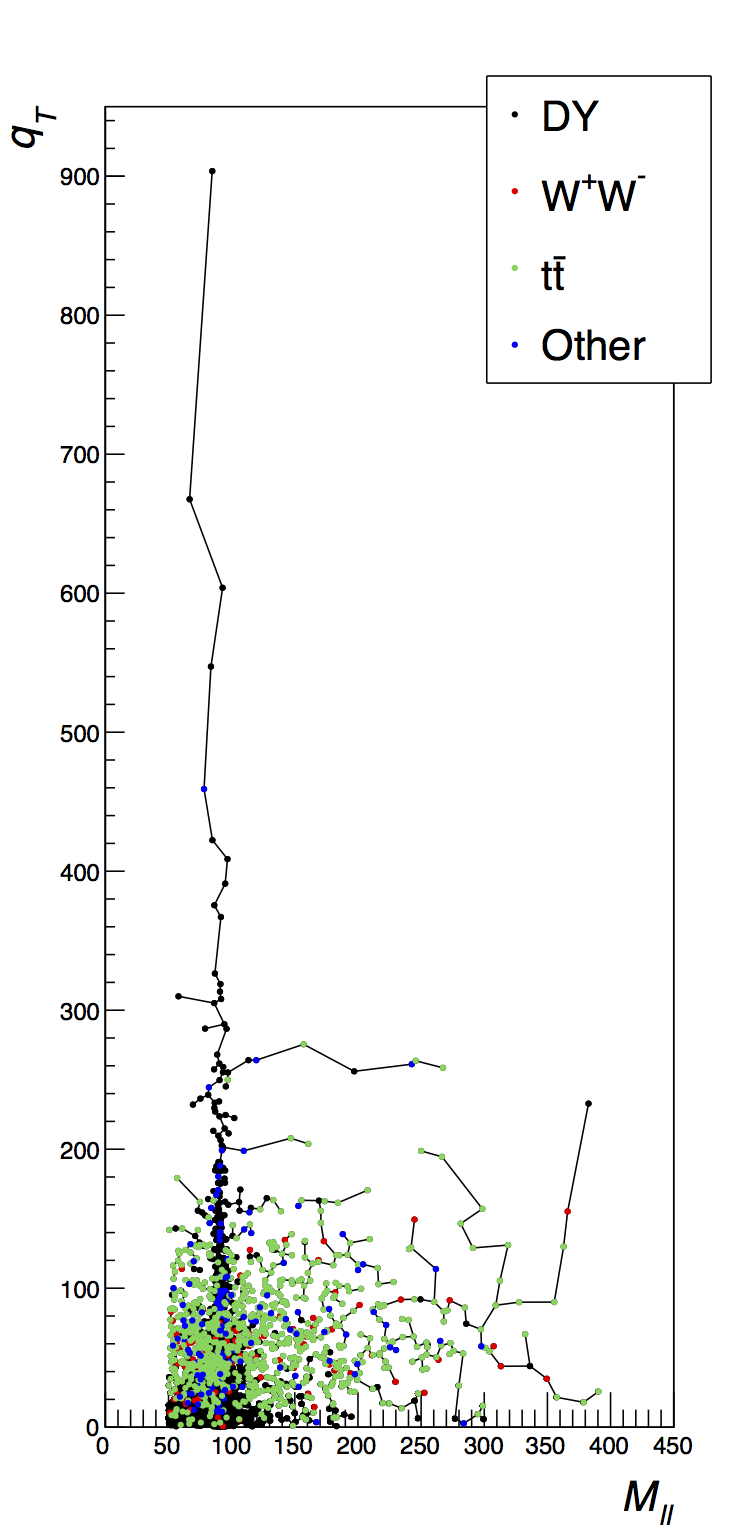Michael Schmitt
Research Areas
Student Research Positions:
I am looking for enthusiastic and hard-working undergraduates
to work with me. I am also looking for future
graduate students. If you would like to contact me about
working in my group, send email to:
m-schmitt@northwestern.edu
|
Postdoc Research Positions:
I am looking for a postdoc to work with me on Mu2e.
(Note: it is possible for a postdoc to also analyze CMS data.)
If you would like to join my research group, send email to:
m-schmitt@northwestern.edu
|
Particle Physics at Colliders
|
My main collider physics research area is the production of W and Z bosons in high-energy proton-proton collisions.
I am a member of the CMS Collaboration.
W and Z bosons are produced singly, in pairs or even in triples. They are
most easily detected through their decays to charged leptons. My group
has worked with muons for many years. The standard model provides a
solid foundation for predictions of the cross sections for W and Z
production. My group tests those prodictions in new and novel ways,
with the goal of identifying failures that point to the need for
improved calculations or to signals for new physics.
My group
is pursuing (at least) three important topics: (1) The measurement of the WW cross section,
which earlier had hinted at new physics. We have deployed a novel and highly effective
classification technique based on random forests. (2) The search for evidence of
WWW production, which is predicted in the standard model and which is highly
sensitive to anomalous quartic couplings. (3) The precise measurement of the
Z branching fraction to four leptons, which is sensitive to new light gauge
bosons that couple primarily to muons.
|

|
CMS public page at CERN
Lepton Flavor Violation
|
I am a member of the Mu2e Collaboration that will conduct a new experiment
at Fermilab over the next decade. This experiment will search for
the conversion of muons into electrons in the field of an atomic nucleus.
Such conversions would violate both muon and electron number, and are
highly suppressed in the standard model. The observation of muon to electron
conversion would be a major breakthrough in particle physics.
Muons are produced by directing a proton beam onto a fixed target. These
muons can be captured by atoms where they usually undergo muon decay,
characterized by a low-energy electron and two neutrinos that escape
direct detection. If the muon converts to an electron with no neutrinos,
then the electron will have a relatively high energy. The experiment searches
for such anomalous electrons. If none are seen, then the upper limit on this
process will be improved by a factor of 10,00 over the existing limit.
|

|
My group is responsible for a representation of the full magnetic field that
must be accurate at the 10-5 level in the detector solenoid.
This is a challenging mathematical and programming task as the field is
highly inhomogenious. A poor representation will compromise the sensitivity
of the experiments because it will lead to a worsening of the electron
momentum resolution.
We also carried out a careful estimate of the background coming from pions
scattering in the stopping target (the target that absorbs the muons) and
of unwanted magnetic bottles that could lead to dangerous backgrounds.
We are interested in the forbidden process μ-→e+
(the charge of the nuclear also changes).
Mu2e Home Page at Fermilab
Advanced Data Analysis Methods
|
My group places a major emphasis on advanced analysis techniques. We try to tackle
problems and pursue uncommon ideas that could make a difference in the way
particle physics data are analyzed in the future. Some but not all of our
work is published in stand-alone papers, i.e., papers not co-authored by the
CMS or Mu2e collaborations.
Recent examples of this work include a paper on using the Bayesian Blocks
algorithm for histogramming
(InSpire),
Minimal Spanning Trees in particle physics
(InSpire),
and the application of random forest classifiers for isolating a
sample of W+W- events in CMS data
(InSpire).
This last study is coming to fruition in the measurement of the
W+W- cross section with CMS data, and also
the jet multiplicity distribution.
|

|
Supernovae Studies
The discovery of dark energy hinged on the use of supernovae as
"standard candles" that could be used to gauge distances accurately.
Little is known about dark energy and better measurements of the
expansion of the universe are imperative.
Supernovae, however, are not well understood.
Large samples will be collected by current intruments and
by the LSST in the future. I am preparing to join the LSST Collaboration
in order to contribute to supernovae studies and to help understand
the expansion of the universe.
The key feature of a supernova is its light curve, ie, the way its
brightness rises and then falls slowly. My group is working on a
representation of supernova light curves based on artificial neural
networks. We also hope to look for anisotropies in the distributions
and properties of supernovae.
LSST Home Page
Misc.
Collider Blog - a particle physics blog that I write occasionally
Last modified: Sun Sep 23 11:01:46 CDT 2018


